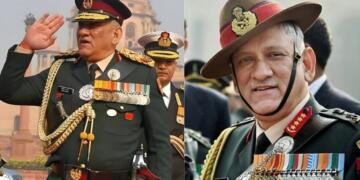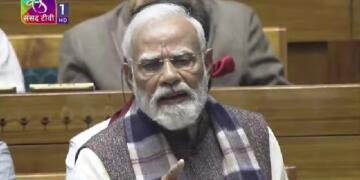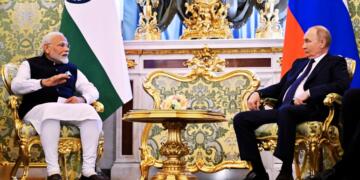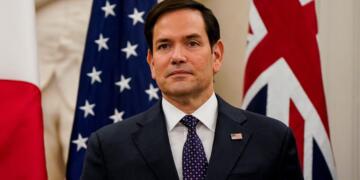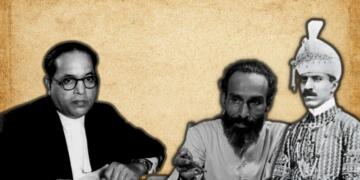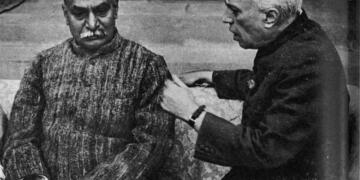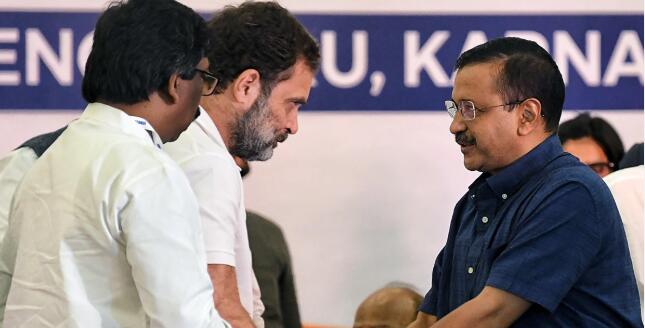The results of the Delhi Assembly Elections are out and the Bharatiya Janata Party has secured a landslide victory thrashing the Aam Aadmi Party which ruled over Delhi for the two consecutive terms. The Bharatiya Janata Party has come back to power after 27 long years and this time with full majority. BJP grabbed a total of 48 seats out of 70 while AAP could only earn 22 of them and Congress could not open its tally. The Electoral defeat of the Aam Aadmi Party was nothing short of a humiliation with nearly all its big party leaders having to taste the sourness of electoral defeat.
Barring Atishi Marlena who managed to scrape through, party supremo Arvind Kejriwal, his deputy, Manish Sisodia, Saurabh Bharadwaj, the senior party leadership faced an election rout at the hands of the electorate. Several factors contributed to this electoral downfall, ranging from governance failures, internal mismanagement, Corruption and tussle with its alliances.
One of the key reasons for AAP’s downfall was the growing dissatisfaction among Delhi’s citizens over unfulfilled promises. The party’s pledges, such as cleaning the Yamuna River and ensuring a steady supply of clean drinking water, remained largely unmet. The construction of Sheesh Mahal, a lavish bungalow for Arvind Kejriwal, also dented AAP’s public image, leading many voters to question the party’s commitment to its “aam aadmi” (common man) ideology.
Moreover, corruption involving senior AAP leaders further eroded the party’s credibility. AAP found itself entangled in multiple corruption allegations, severely tarnishing its reputation.
The Role and larger Objective of Congress
While the Bharatiya Janata Party (BJP) emerged victorious in Delhi, another significant factor in AAP’s defeat was the role played by the Indian National Congress. Despite not winning any seats, Congress effectively cut into AAP’s voter base, preventing it from putting up a good fight against the BJP.
Interestingly, AAP and Congress are part of the broader opposition coalition, the I.N.D.I alliance ‘at the national level’. However, this did not stop Congress from launching an aggressive campaign against AAP in the national capital, especially in a few crucial pockets thus adversly effecting AAP’s electoral prospect. Initially appearing reluctant, the Congress party, in the latter stages of the campaign, shifted gears and targeted AAP with full force. Rahul Gandhi accused AAP of misgovernance and coming down on him in his election rallies while strolling around with a bottle of dirty water to corner him on the issue of water pollution in Yamuna river. This messaging resonated with a section of the electorate, drawing a section of traditional Congress supporters back from AAP, leading to significant vote share erosion for the latter.
AAP’s Rise from Congress’s Decline
The irony of this electoral battle lies in the historical relationship between AAP and Congress. AAP originally rose to power in 2013 by decimating Congress in Delhi, capturing its traditional vote bank. For years, AAP positioned itself as a viable alternative to the Congress in politics. However, this election result indicates a possible reversal of fortunes, with Congress managing to reclaim a portion of its lost voter base.
Congress’s strategic attack on AAP can be seen as an attempt to reassert itself as the primary opposition party. The party, which had been struggling to maintain relevance in Delhi since 2013, saw this election as an opportunity to weaken AAP and pave the way for its own resurgence in the capital’s political landscape. Congress’ downfall compounded by the rise of its arch-nemesis AAP, as an effectively ‘third National political party’ must not have bod down well within the rank and file of the grand old party and they squared one off, in spectacular style in this battle for Delhi sultanate. It can also be seen as Congress’ test case of a vote bank labotary, can it be the natural first choice of Muslim voters, in pockets, even when, it is virtually written off in that particular election, and the result seems to be partially optistic.
The National Political Perspective
Beyond Delhi, the Congress-AAP rivalry carries broader implications. In recent years, AAP has positioned itself as a national alternative to Congress, especially after its Punjab Assembly election victory. Congress, which suffered a humiliating defeat in Punjab at the hands of AAP, seemingly saw this election as an opportunity to strike back.
The implications of AAP’s defeat extend to the opposition dynamics at the national level. Some regional parties, such as the Samajwadi Party, had shown a willingness to align with AAP, considering it a stronger opposition force than Congress. Akhilesh Yadav’s campaign efforts for AAP in Delhi suggested a potential shift in alliances. However, with AAP’s loss, Congress regains the upper hand in positioning itself as the leader of the opposition bloc against the BJP.
Additionally, internal tensions within the opposition alliance have been growing, with leaders like Mamata Banerjee being projected as alternatives to Rahul Gandhi for the prime ministerial race. The weakening of AAP removes one of the challengers to Congress’s claim as the primary opposition force, allowing it to consolidate power within the I.N.D.I. alliance.
Moreover, the resurgence of Congress as a disruptor in Delhi politics complicates AAP’s prospects in future elections, including in Punjab, where Congress now sees an opportunity for a comeback.



